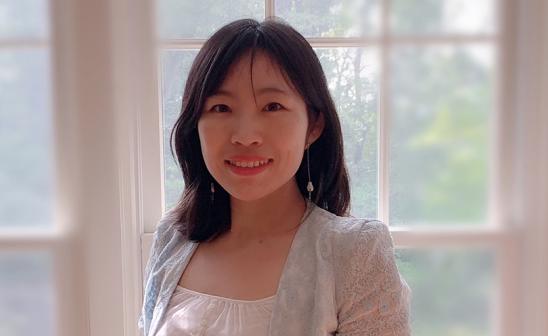Young children from China and the U.S. consider race in forming gender stereotypes about brilliance

A study published in Developmental Psychology — along with research funded by an NSF CAREER Award — aims to break down gender stereotypes and promote girls’ involvement in STEM.
By Sarah Steimer
Gender stereotypes linking intellectual talent to men begins at a young age, and new research shows there’s also a racial component and may be culturally consistent. The study furthers the understanding of how children acquire gender stereotypes about intelligence in non-Western cultural contexts, while also underscoring the importance of considering a range of social identities when exploring the root of stereotypes.
Lin Bian, an assistant professor in the Department of Psychology, began her research on children’s perceived intelligence of different genders years ago, wanting to better understand why women are underrepresented in certain fields, such as STEM.
In Bian’s earlier work, she found that children begin associating men with higher intelligence than women around age 6. Building upon this, Bian and her former graduate student Yuhang Shu, explored how this gender brilliance stereotype develops in non-Western cultures and whether children consider race in forming this stereotype.
“The U.S. culture tends to portray brilliance as a male trait and this idea emerges early in development,” says Shu, first author of the study, “We were interested in whether children from a different culture are sensitive to these stereotypes.”
For the present work, published in Developmental Psychology, the team used child-friendly questions to assess children’s ideas about brilliance. In one set of questions, the researchers told children a story about a really smart person without specifying the gender. They then showed the children four pictures — two men and two women — and asked who was referenced in the story. In another set of the questions, the team showed children pairs of men and women and asked the children to choose who was really smart. Across four studies, they varied whether children saw pictures of white people or Asian people.
Similar to American children, the researchers found that children in China also hold gender stereotypes about brilliance, and they associated high intelligence with white men rather than white women. But when shown images of Asian people, both Chinese and American children were more likely to attribute high intellectual talent to Asian women than Asian men.
“Children from early on apply the gender brilliance stereotype more strongly to white people than to Asian people.” Bian says, “When we think about stereotypes, it is important to hold an intersectional perspective.”
The study also included Qingfen Hu, an associate professor in the Institute of Developmental Psychology at Beijing Normal University, and Fei Xu, a professor of psychology at the University of California, Berkeley.
Bian says the next step is to address two questions: How do children develop this intersectional framework to construct stereotypes, and what can be done to break down gender brilliance stereotypes?
“We have already shown that these gender stereotypes push girls away from activities said to require high intelligence as early as age 6. More work is needed to explore the roots of the global gender disparity.” Bian says.
As she continues to study the phenomenon, Bian was also recently named the recipient of the National Science Foundation’s CAREER Award. The award will support Bian’s work on bridging the gender gap by investigating and counteracting the influence of gender brilliance stereotypes on girls’ STEM participation.
Specifically, the project will address three questions: How children internalize the gender brilliance stereotype; how the gender brilliance stereotype influences children’s, especially girls’, engagement; and what strategies can be developed to empower girls in STEM.
“Gender brilliance stereotypes are quite pervasive,” she says. “We need to find ways to help children navigate these messages and protect our girls from being influenced by these gender stereotypes.”
 THE UNIVERSITY OF CHICAGO
THE UNIVERSITY OF CHICAGO

